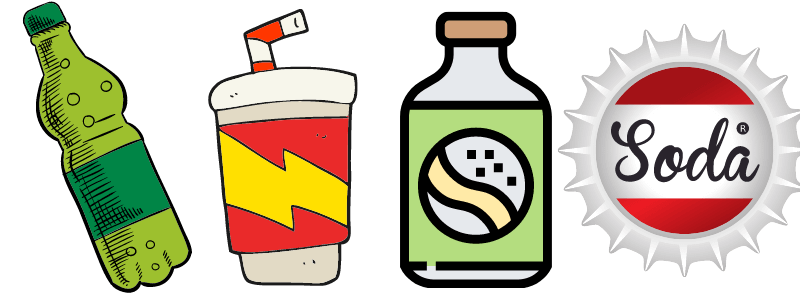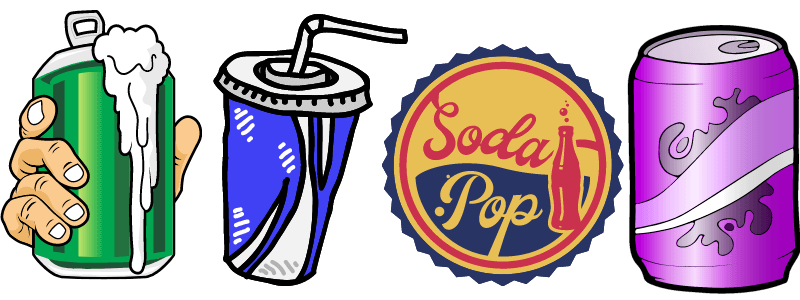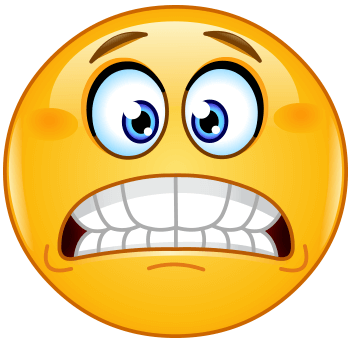This soda has more sugar than seven Chewy Chips Ahoy cookies and contains caramel color which is made by treating sugar with ammonia.

Stewart’s was founded in 1924 as a root beer stand in New Jersey and became famous for its craft-style sodas—long before "craft soda" was trendy! Stewart’s uses caramel color (E150d) made by heating sugar with ammonia or ammonium sulfite. This gives it that deep, dark hue while also (controversially) generating trace amounts of 4-MEI, a potential carcinogen.
Clear sodas (like Sprite, 7UP, Sierra Mist) actually erode and stain teeth more than dark colas (Coke, Pepsi).

Clear sodas rely on citric acid (from lemon/lime flavoring) for tanginess.
Colas use phosphoric acid (for sharpness) + caramel color.
Why it matters:
- Citric acid is 10x more erosive to tooth enamel than phosphoric acid.
- It chelates calcium—literally strips minerals from teeth, making them porous and prone to staining from other foods (coffee, tea, etc.).
This soda has more calories than 12 servings of Redi-Whip and you would have to eat 12 Hershey's kisses to equal the sugar count!

Mug Root Beer (and Cream Soda) was originally brewed in San Francisco in the 1940s with a slogan promising it would "hit the spot!" The Cream Soda version tastes like liquid vanilla cake batter—which explains the insane sugar content.
This soda propylene glycol, a preservative, thickening agent, and stabilizer, also used as antifreeze to de-ice airplanes, as a plasticizer to make polyester resins, and found in electronic cigarettes.

Pibb Xtra was originally called Mr. Pibb until 2001, when Coca-Cola “upgraded” it to compete with Dr Pepper. The reformulation might have reduced PG—but older fans swear the original had a “smoother” spice kick.
Advertisement
This soda gets its color from Yellow 6 and Red 40 both linked to health issues and cancer.

Sunkist’s original 1979 formula used beta-carotene (a natural dye from carrots) but switched to cheaper artificial dyes later. The "natural" version still exists in some countries (like the UK). Red 40: Associated with ADHD exacerbation and possible immune system effects. Yellow 6: Banned in Norway and Finland until 2022 (EU now allows it with warnings). Both dyes are derived from petroleum and may contain trace carcinogens.
This soda contains Quillaia a tree bark, and it helps soda foam up.

A natural foaming agent extracted from the soapbark tree (Quillaja saponaria) native to Chile. Used in sodas to create a thick, creamy foam (critical for root beer's signature "head"). A&W is the major root beer to openly list "quillaia extract" in its ingredients (e.g., in A&W Cream Soda and some bottled A&W Root Beer variants).Competitors like Barq’s or Mug Root Beer use yucca extract or artificial foaming agents instead.
Aspartame (Diet Coke): Breaks down into formaldehyde.

The formaldehyde claim is technically true but biologically insignificant at normal intake levels. The real debate is about long-term metabolic effects, not acute toxicity.
Up until 2020, this soda contained brominated vegetable oil (BV0), a patented flame retardant for plastics that has been banned in foods throughout Europe and in Japan.

BVO was originally patented as a flame retardant for plastics before the food industry repurposed it. The same chemical once kept your couch from burning and your soda fizzy. The FDA still permits BVO in the U.S. (up to 15 ppm).
Advertisement
This soda was discontinued in 2023, it contained sodium and potassium benzoate and orange juice which when combined can form benzene - a carcinogen.

Surge (aka Vault in its later years) was the notorious soda that famously contained sodium benzoate, potassium benzoate, and citrus juice—creating the potential for benzene formation. Since Surge was discontinued in 2023, the current sodas that still fit this risky combo are Fanta Orange and Sunkist Orange.
This soda has 17 grams more sugar than a bag of skittles and the same ingredients.

A 1 oz (28g) bag of Skittles ≈ 47g sugar - A 12 oz can of Fanta Grape ≈ 64g sugar. Both contain High fructose corn syrup (main sweetener)-Artificial flavors and Food dyes (Red 40, Blue 1)—similar to Skittles' coloring. Fanta was actually invented in Nazi Germany by the Coca-Cola company during WWII due to a Coca-Cola syrup shortage! The name comes from the German word "Fantasie" (imagination).


